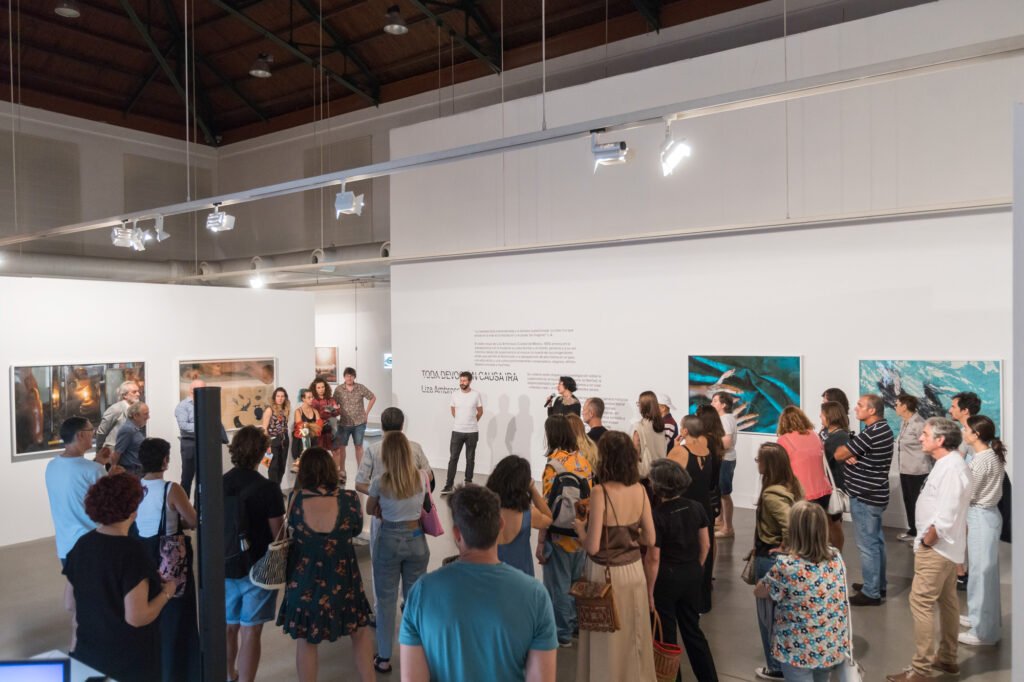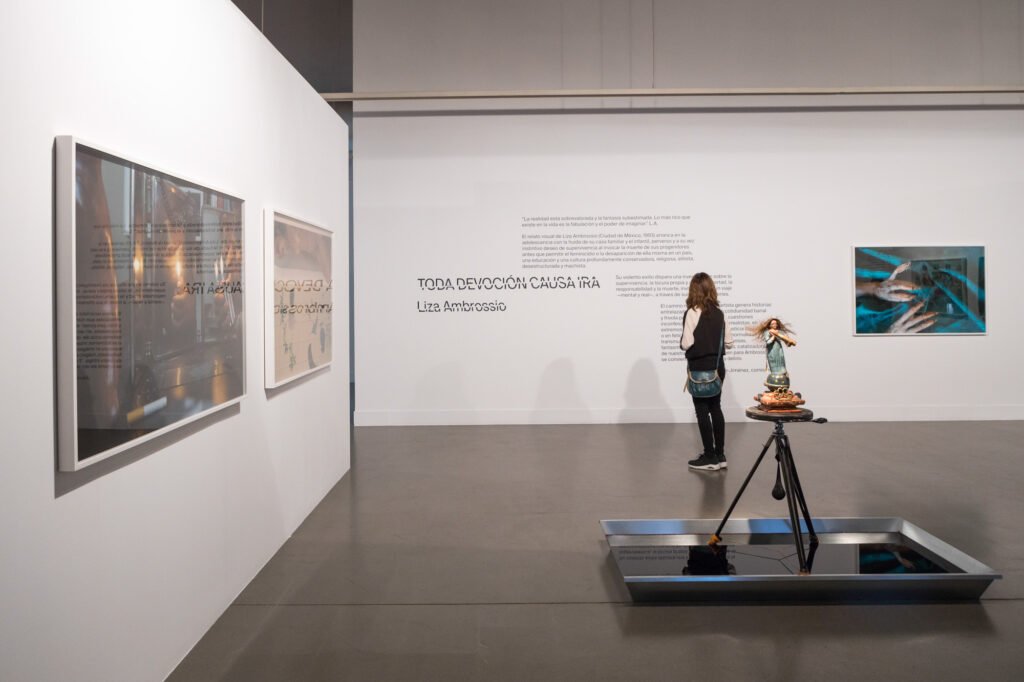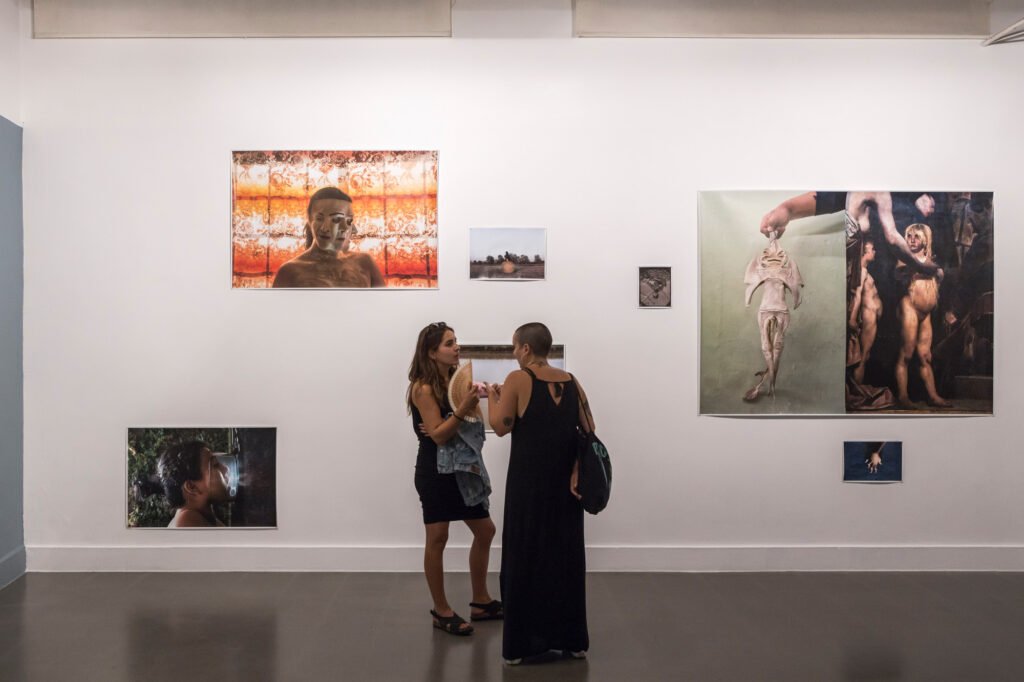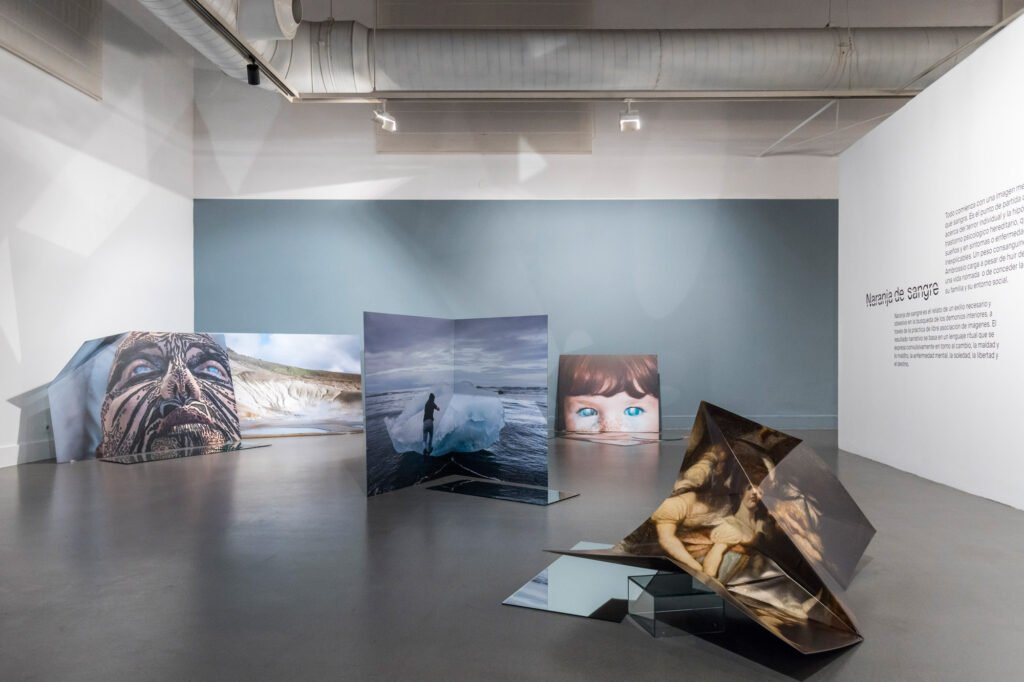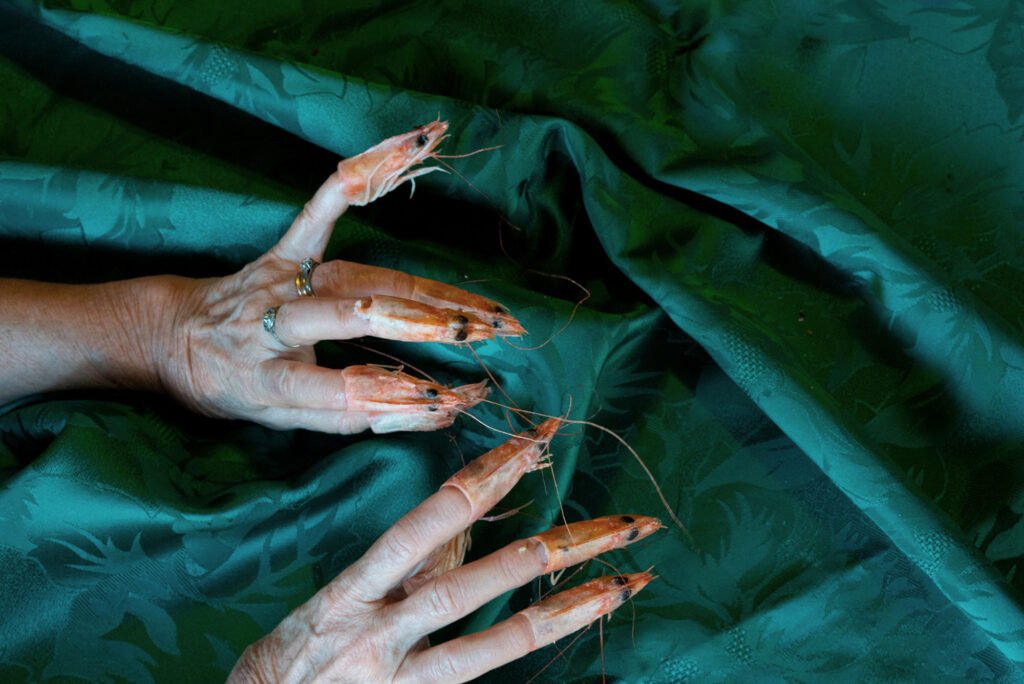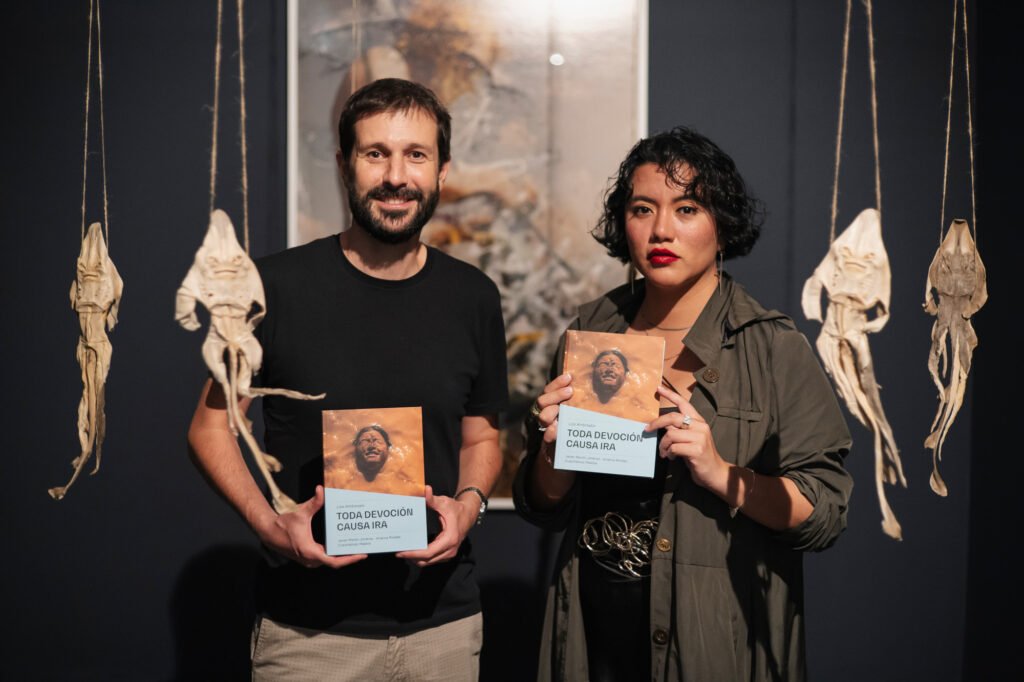LIZA AMBROSSIO
Interview with Javier Martín-Jiménez on Liza Ambrossio’s work
interview by: Giangiacomo Cirla
Giangiacomo Cirla: Hello Javier, it is a pleasure to be able to talk with you about Liza Ambrossio’s work, particularly what you have accomplished together during the last few years of collaboration and what you have recently inaugurated. I ask you, first of all, how your practice and research found in Liza’s work the ground for a lasting collaboration…
Javier Martín-Jiménez: Thank you for your time and dedication. The first thing that caught my attention about Liza’s work was the maturity of her photographic series, especially coming from a young artist (Liza Ambrossio was born in Mexico City, 1993). When I met her five years ago, I immediately realized that her professional career was a long marathon that just had begun. And I decided to run besides her.
GC: a journey together that has led you to recently opened “Toda devocion causa ira” an exhibition of Liza Ambrossio you curated at the Sala Amos Salvador in Logrono. Can you tell me about this project?
JMJ: “Toda devocion causa ira” is her first big solo show in Spain, therefore it was important to conceive an exhibition to present her principal series for inviting the visitors through the looking-glass.
The visual narrative of Liza Ambrossio begins in adolescence with her escape from her family home. At the same time, she has the childish, perverse and instinctive desire for survival by invoking the death of her parents rather than accepting her own feminicide or disappearance in a country, that is deeply conservative, religious, elitist, deconstructed, and sexist.
Her violent exile triggers an investigation into survival, one’s own and others’ madness, freedom, responsibility, and death, inviting us on a mental and real journey through her different series.
The path taken by the artist generates intertwined stories that break the banal and frivolous everyday life to focus on unspeakable issues, surrealistic actions, extreme acts of desire, symbolic justice, or macabre fetishes. Normalcy transmutes into monstrous, ghostly, magical, or cursed images, catalyzing our intrigue. Every image for Ambrossio thus becomes bait and delirium.
The exhibit “Toda devocion causa ira” includes the series “The anger of devotion”, “Blood Orange”, “The witch stage” and “Betrayals I cannot bear, the saints the only good ones”. The first two are known especially in the form of photobook, published by La Fábrica and by Kehrer Verlag.
GC: You know her work very well and have been collaborating with her for years. These are important years that have seen Liza grow a lot. What evolution are you observing?
JMJ: Liza does not separate her work from her life, she conceives it as a whole, something inseparable. Therefore, the evolution of her work is an evolution of life. This can be seen in the sequel of her photographic series, where she goes deeper into both emotions and feelings and the way to confront them artistically.
Liza Ambrossio’s first work, “The rage of devotion”, creates an alternative life from a visual diary. It shows the scars caused by the change in life direction, initiated by leaving the family nest, to the different paths chosen and to be chosen, often marked by a primitive animal instinct. There are ashes of the past, but also visions of dreams and futures. And there is also a constant and undefined presence in the work, like a ghost that accompanies her in the shadows, on which she occasionally fixes her gaze and often confuses with the reflection of her own face.
“Blood oranges” started with an investigation into individual terror and the hypothesis of suffering from a hereditary psychological disorder, which would manifest itself in dreams and in seemingly inexplicable symptoms or illnesses. A blood bond that the artist Liza Ambrossio carries despite fleeing the past.
Her third major series, “The witch stage”, delves into the terrible violence against women that leave and common headlines in different parts of the world about disappearances and murders.
Based on the research of a family tradition—women in her lineage have practiced witchcraft for several generations—Liza Ambrossio proposes an expanded and shared magic as a possible universal defense against the patriarchy. Misogyny is fought in her work through the representation of women as immortal and immoral beings with supernatural powers.
GC: What do you think are the characteristics that make Liza Ambrossio’s work something necessary?
JMJ: It is truly complex to make an artistic work that is deeply personal but at the same time allows viewers to enter a world full of fables. For this reason, her work takes us to the surreal worlds of Lewis Carroll, to the dark worlds of Poe or Lovecraft, or to worlds of psychological terror that are reminiscent of stories by Mariana Enríquez or Leila Guerriero.
Besides, from the strange images she produces, the spectator rethinks reality. She brings to light important topics that are oftentimes forgotten such as the machismo murders or the recent Spanish dictatorship.
The syncretism of religions between Spain and Latin America is very present in the work of Liza Ambrossio, so the current exhibition at the Amós Salvador Gallery, whose first historical use was as the Convent of La Merced (early 14th century), adds a special dimension to her work. Moreover, a few meters from Amós Salvador Gallery, a plaque commemorates the last “witch burning” carried out by the Inquisition in November 1610.
The work developed by Liza Ambrossio during a residency of more than a month in Logroño connects history, land, blood, and wine with memory, loss, and mourning. It is her last series in the exhibition called “Betrayals I cannot bear, the saints the only good ones”, and she makes link between the Spanish witch hunt and the long Spanish dictatorship (1939-1975).
GC: Liza Ambrossio is an artist who uses the photographic medium in a very personal way and exploits its capabilities by going beyond a traditional use. The senses are involved in both the observation and perception of her works. What are your thoughts about this mode of using the photographic?
JMJ: The first series “The rage of devotion” marked a way of working with photography that will be a hallmark of the author’s identity, with a free and unceremonious treatment, with her own and other people’s photos, original and modified, distorted, cropped, inverted or duplicated…
On many occasions it seems that Liza mistreats the photographs, she has no “respect” for them. What interests her is the resulting image, which she departs in many cases from the neatness of other photographers. In the exhibition, “Toda devocion causa ira” the public can find everything from large photographs framed in a traditional way (glass and wooden frame) to folded, painted and scratched photographs, which are mounted on the wall with thumbtacks or nails.
GC: What role does the exhibition set-up play?
JMJ: It is very important in this exhibition to understand the way in which Liza transforms the images. For example, in the “Blood Orange” series, photographs are not traditionally mounted on the walls but rather mounted on aluminum and function as sculptures, which viewers have to walk around.
And there are also light installations, drawings and sculptures that reminds the visitors to photographs seen before.
In any case, wherever the public looks, there will always be an image staring back at them. The staging is designed so that the viewer observes and always sees themself being observed, which causes a feeling of discomfort that we are interested in achieving.
GC: Have you also produced a publication?
JMJ: We wanted to make a publication to accompany the exhibition, but not a catalogue neither a photobook. We decided to produce a book with texts and photos by inviting two international curators besides me. We proposed a game to them. Each one of us had to select no more than 30 photos from Liza’s production and to write one text per image. This publication includes nearly 80 texts written as result of the free association of ideas from images by Liza Ambrossio, elaborated by the three curators who most have worked closely with her in the different stages of her career: Cuauhtémoc Medina (Mexico), Arianna Rinaldo (Italy) and myself, Javier Martín-Jiménez (Spain). And there is an introduction written by the artist.
GC: This exhibition provides an overview of the artist’s life and allows visitors to immerse themselves in Liza Ambrossio’s world. Her work is extremely autobiographical and each new project serves her primarily to investigate and move forward in her journey. What do you think is the artist’s goal? What is the motivation that drives it all?
JMJ: After years of nomadic life, as a way of trying to leave behind the different emotional burdens, it is still in doubt whether the creative process has had its cathartic healing function – if the author has exorcised her demons or they are still there.
Liza Ambrossio (1993, b.Mexico City) is a multidisciplinary artist, Filmmaker & Women’s rights activist, Franco-Mexican who lives and works in France. She began her artistic practice at the age of sixteen when she asked an ancient maid from her mother’s house to steal the photographs from the family albums looking for traces of a dark past for which there seemed to be no evidence. At the same time in her native Mexico City, Ambrossio portrayed her transition from adolescence to adulthood looking for ways to survive from a distance during a chaotic and stormy process of emancipation from her family.
After the suicide of her roommate and best friend from adolescence, she inherited his job as a “nota roja” photographer (police press), covering murders, accidents, and torture by drug traffickers at dawn for a local newspaper. Ambrossio goes on a journey of psychic and physical discovery flooded with disturbances, magic, trauma, dreams, and visions. In these moments, she discovers that the hell inside contains the same hell that explodes outside.
After concluding her university studies in Politics at the Facultad de Ciencias Politicas y Sociales in the U.N.A.M., Mexico City, specializing in negotiation and management of political and social conflicts at U.T. (U.S.A.), she received multiple scholarships in the United States and Europe, among them; the Descubrimientos scholarship for the Master in Photography and artistic projects at the PIC. A school awarded by the PHotoEspaña festival and the editorial house La Fabrica in Madrid, Spain.
Her universe breathes a real attempt to understand the powers and weaknesses of the mind as a way to scrutinize the human experience, which goes through the past, present, and future time. Ambrossio is incorporating symbols alluding to witchcraft, eroguru, mythology, memories, and legends that she mixes with her written narrative, photo sculpture, photo books, objects, installations, sounds, paintings, drawings, performance, and videos that she unites by free association, schemes promoted by her own theories related to psychological manipulation and its influence on the continuation or rupture of the power professed by the different social structures. Their approaches have an intense but anarchic relationship with chance and instinct and imply the destabilization of female canons that threaten the possibility of exceeding ethnic, sexual, moral, religious, and political limits.
She is the author of “The rage of devotion_La ira de la devoción” edited by La Fabrica, considered by the British Journal of Photography and El País as one of the most exalted and risky photo books of the year 2018, her work has been exhibited in Europe, the United States, Malaysia, Mexico and Singapore. Including sites such as the Somerset House in the UK, the Palazzo Palmieri and the Ex Mattatoio-Rome in Italy, the Göteborgs Konstmuseum in Sweden, the Museum of Contemporary Art (MACQ) in Mexico, the Museum of Contemporary Art of Zagreb (msg) in Croatia, the Museum National of Contemporary Art (ΕΜΣΤ), in Greece, Casa de America in Spain within the official selection of PHoto España 2021, the Manuel Rivera Ortiz Foundation, during the Rencontres de la photographie de Arles 2022, the Académie française and the Collection Lambert in Avignon, France; also international fairs such as Art Basel, Arco, Photo London, UNSEEN, Zona Maco and JustMad. Ambrossio’s imaginary has been reviewed by Art Nexus, The British Journal of Photography, The Magnum Foundation, El País, Babelia, El Mundo, Der Greif, GUP, Unseen magazine, Vogue Italy, L’Officiel, El Universal, Fire cracker, and Lens Culture. She has received the FNAC Nuevo Talento award in Spain,Voies Off in Arles, France the same year 2018, the Flash Forward in Canada, the PhEST in Italy, and the PHmuseum New Generation Grant in the United Kingdom during 2019. In 2020 she was awarded by the annual photography residence from the Musée du Quai Branly – Jacques Chirac in París, France. Ambrossio is currently a member of the Académie française in Spain, also she was recently nominated for the prestigious Prix Pictet in Switzerland, the Prix of Cisneros Fontanals Art Foundation (CIFO), and the Arts Electronica in the U.S.A. The year 2022 she won the Singapore International Photography Festival (SIPF), and the Helsinki Photo Festival, and exhibited at the Yvon Lambert collection in Avignon, France. Ambrossio was invited to the Women’s Forum for the Economy and Society as a speaker at the table: When art calls for social change, recognized by the Financial Times, like one of the most influential forums in the world. Also she has presented her second photo book “Blood Orange_Naranja de Sangre” and during 2023 works on her third photo book entitled “The witch stage” with the acclaimed German publishing house Kehrer Verlag, and in her first book of art criticism entitled “Toda devoción causa ira” by the Spanish editorial Pepitas de Calabaza.
Ambrossio has received favorable reviews regarding her different projects from top international curators and art critics such as Arianna Rinaldo, IT, Cuauhtémoc Medina, MX, Christine Barthe, FR, Fabienne Aguado, FR, Jae Seok, KOR, Javier-Martín Jiménez, SP and Johan Sjöström, SWE. Her works are part of important collections such as the Musée du Quai Branly – Jacques Chirac, Paris, FR, the Académie de France, Madrid, SP, and the Nadine Foundation, NL, among others.
Javier Martín-Jiménez is a freelance curator and cultural manager based in Spain. He holds a degree in Art History from the Autonomous University of Madrid. Currently, he is the artistic curator of the Conde Duque Contemporary Culture Center (Madrid). In addition, he serves as Co-Director of Interfaz, a professional consulting firm specialized in Culture and dedicated to advising Public Administrations. Member of the Advisory Council of the MACBA Museum of Contemporary Art of Buenos Aires since May 2022.
Previously, he was the Art Consultant of the Ministry for Culture, Tourism and Sports of the Regional Government of Madrid (2015-2019). Formerly he founded and worked as Director of Hablar en Arte Association in Madrid, which functions as a platform for independent art projects, including exhibitions, performances, and community activities. Besides he was General Coordinator of PhotoEspaña, International Festival of Photography.

